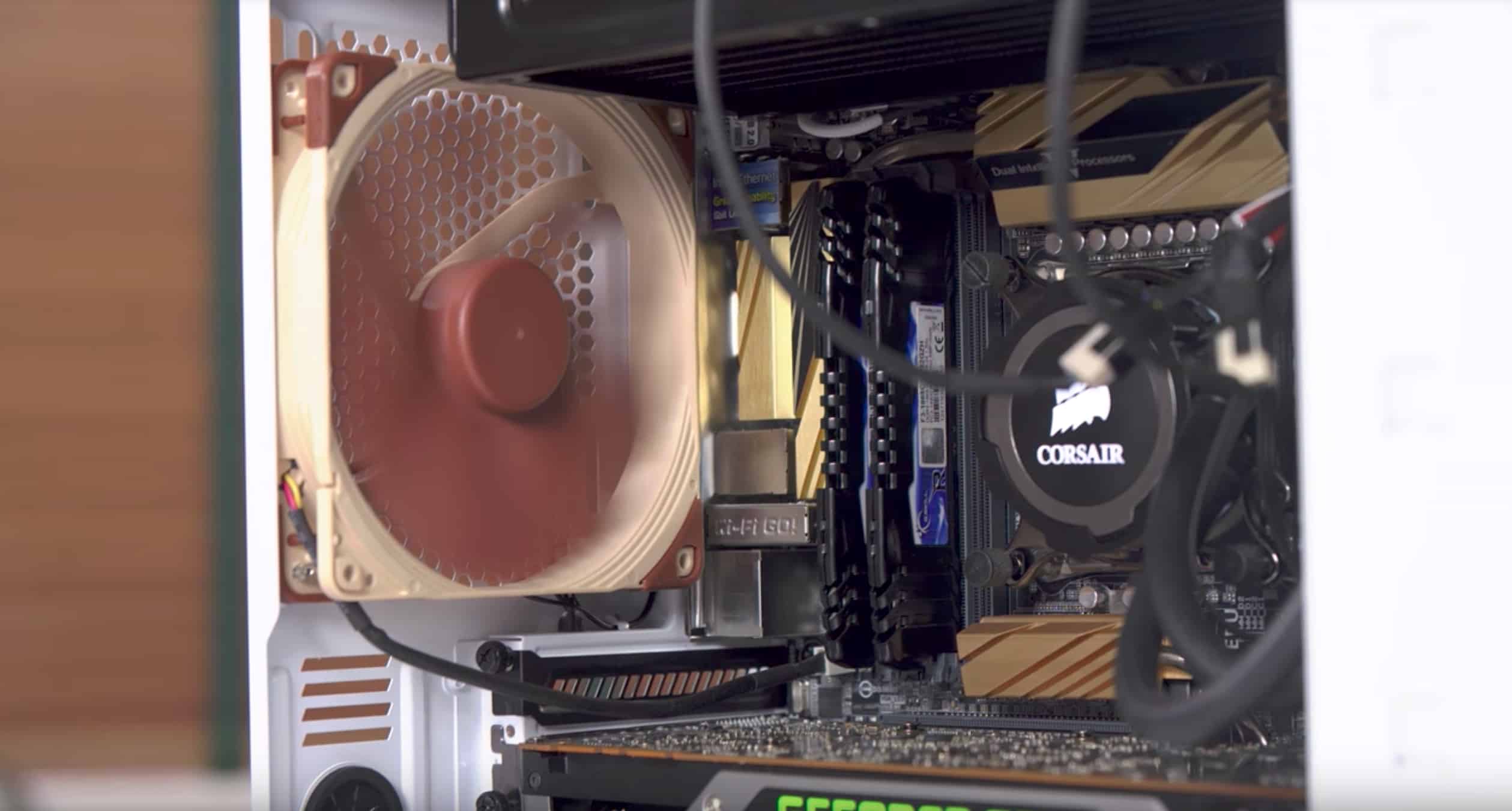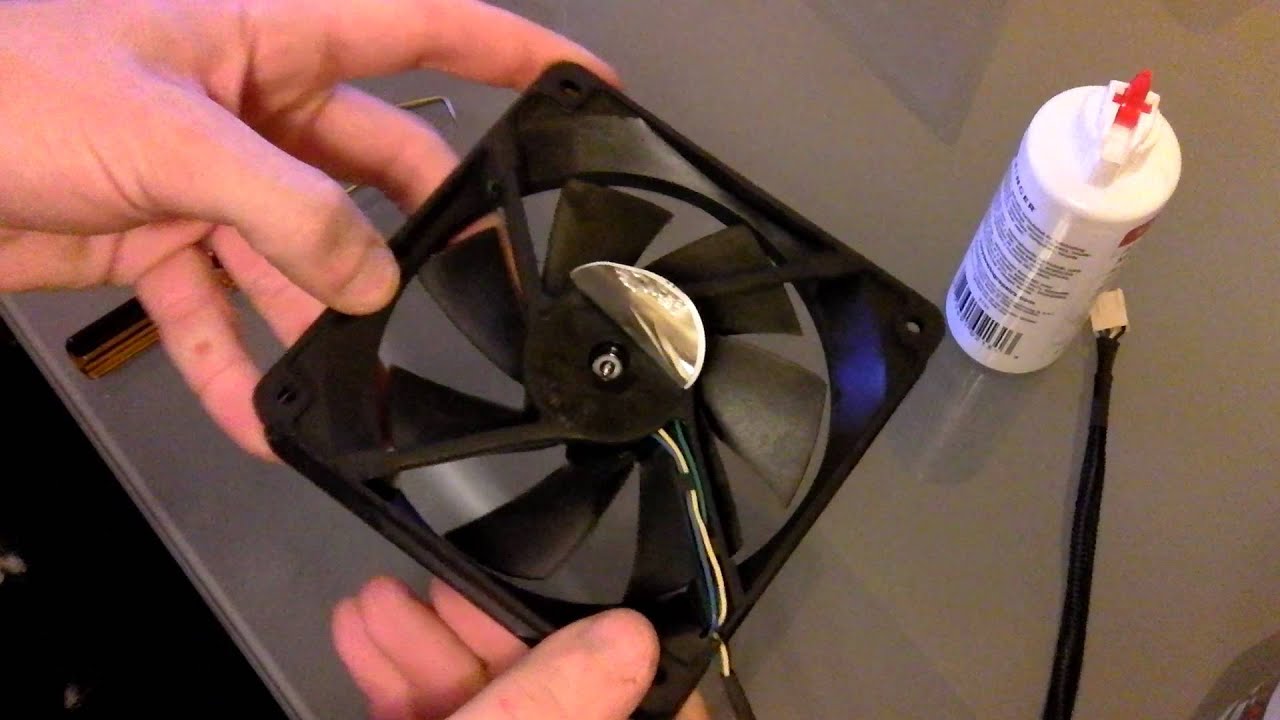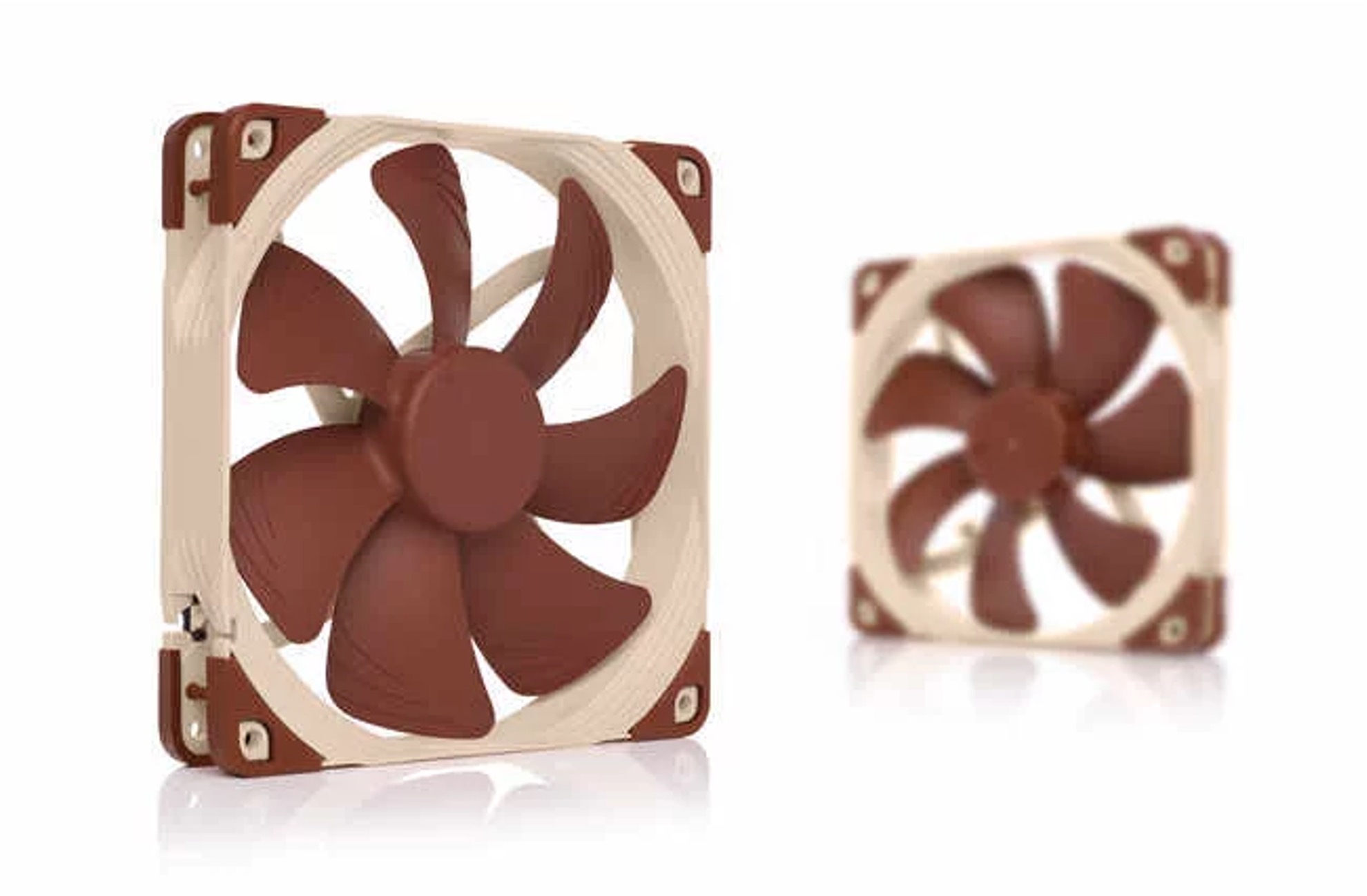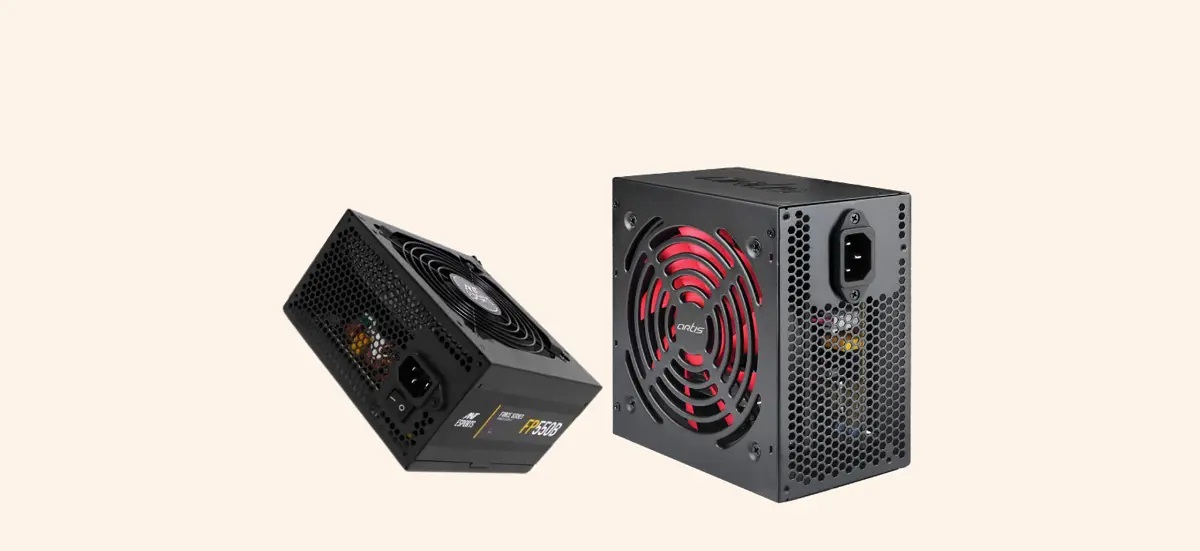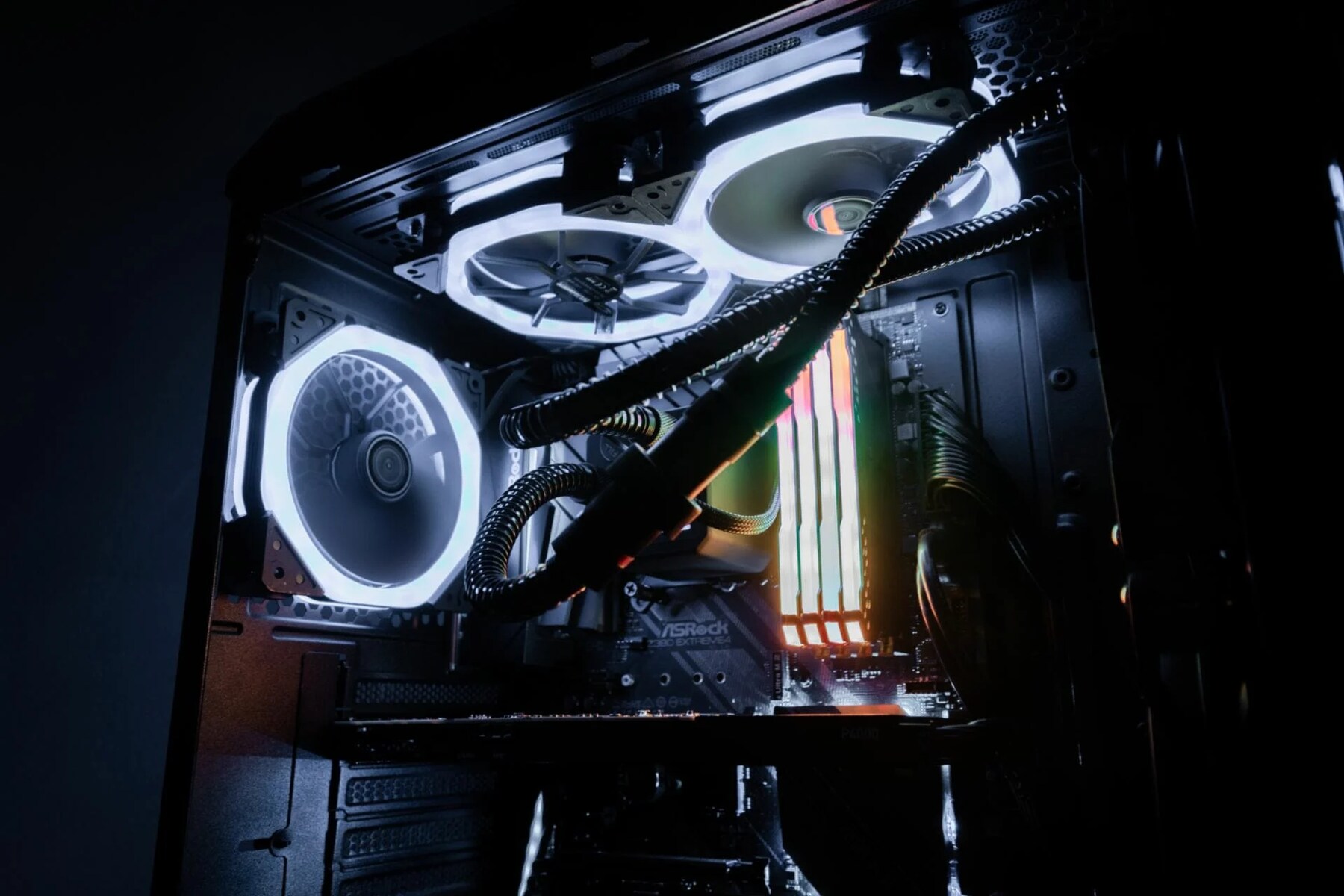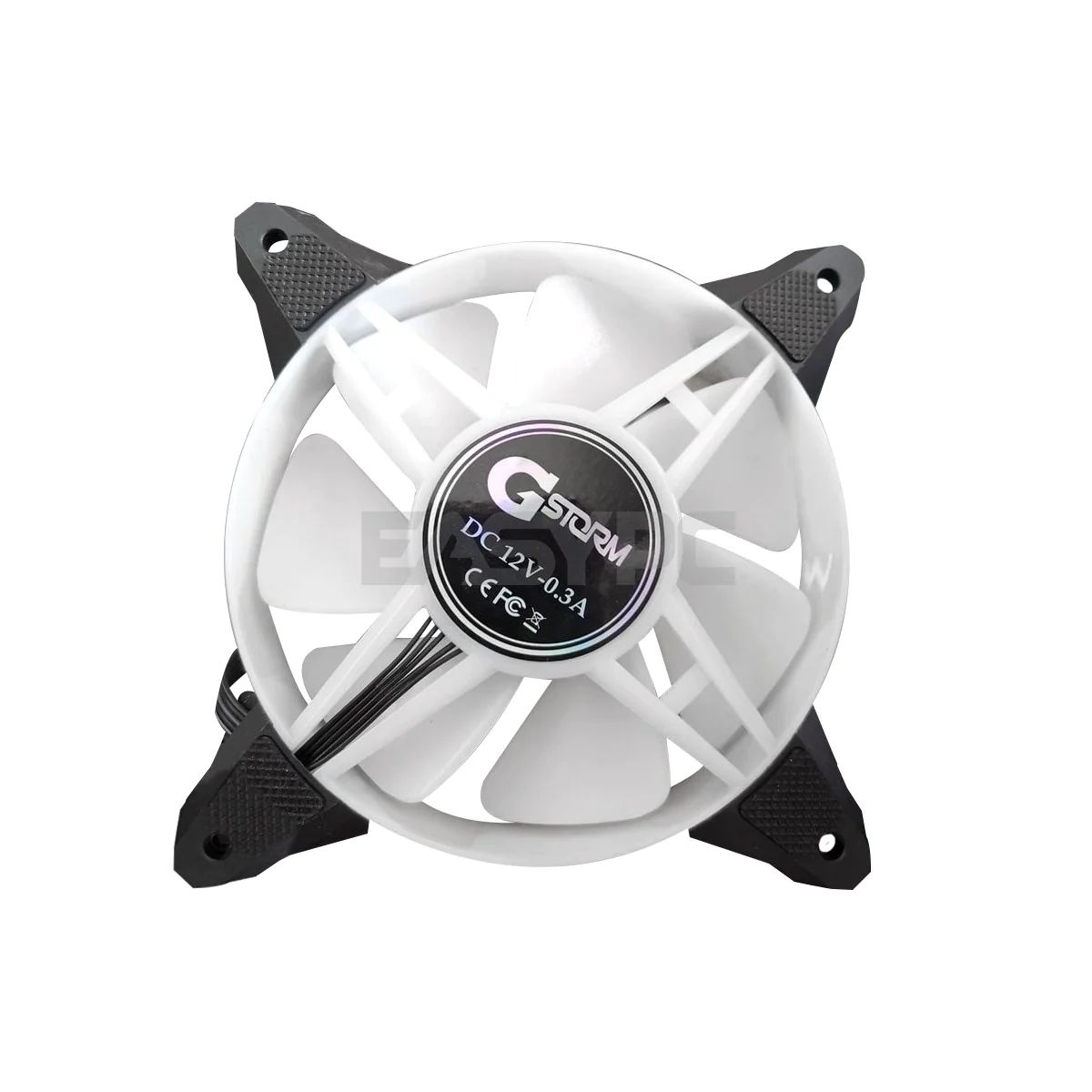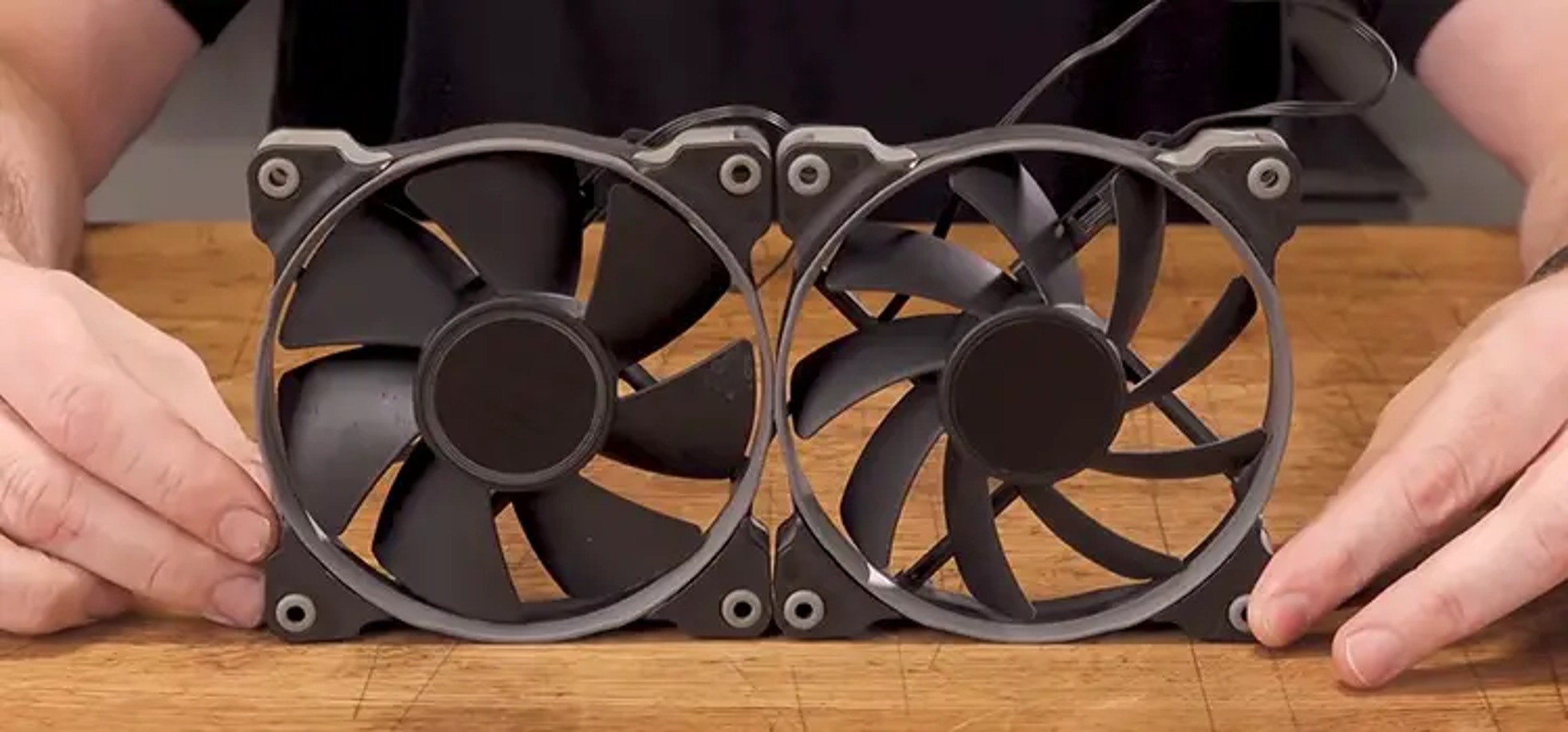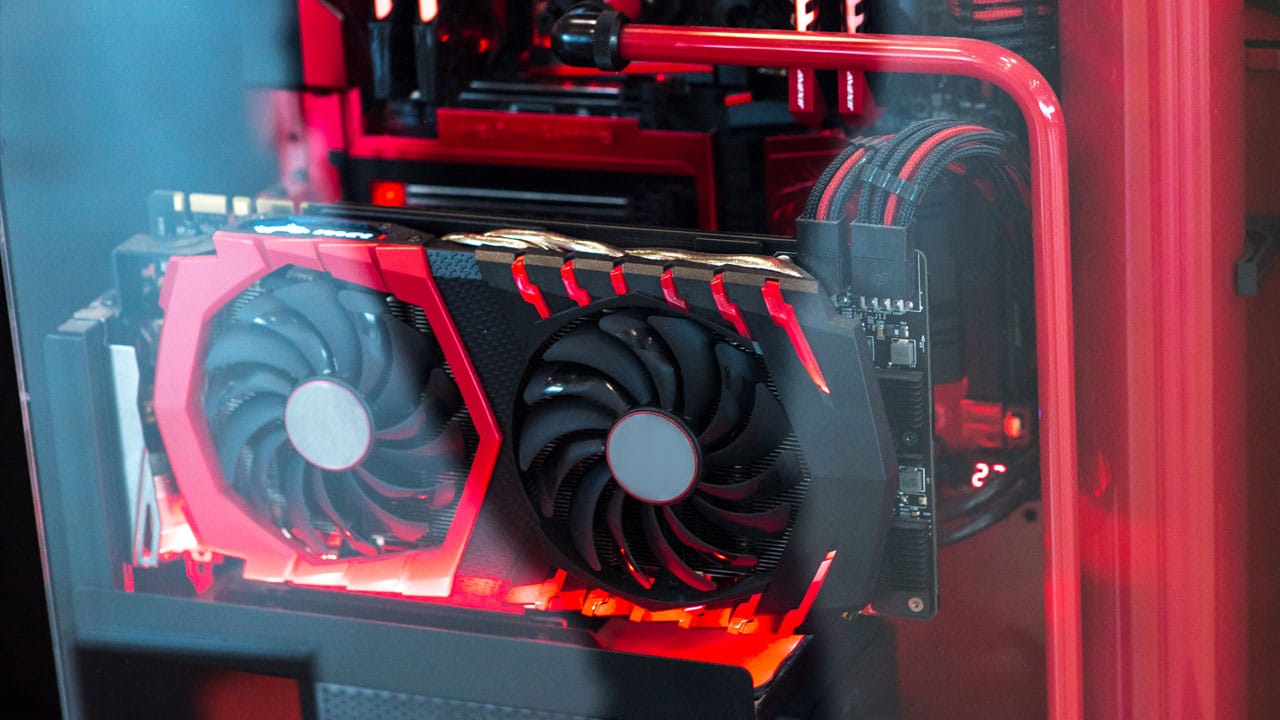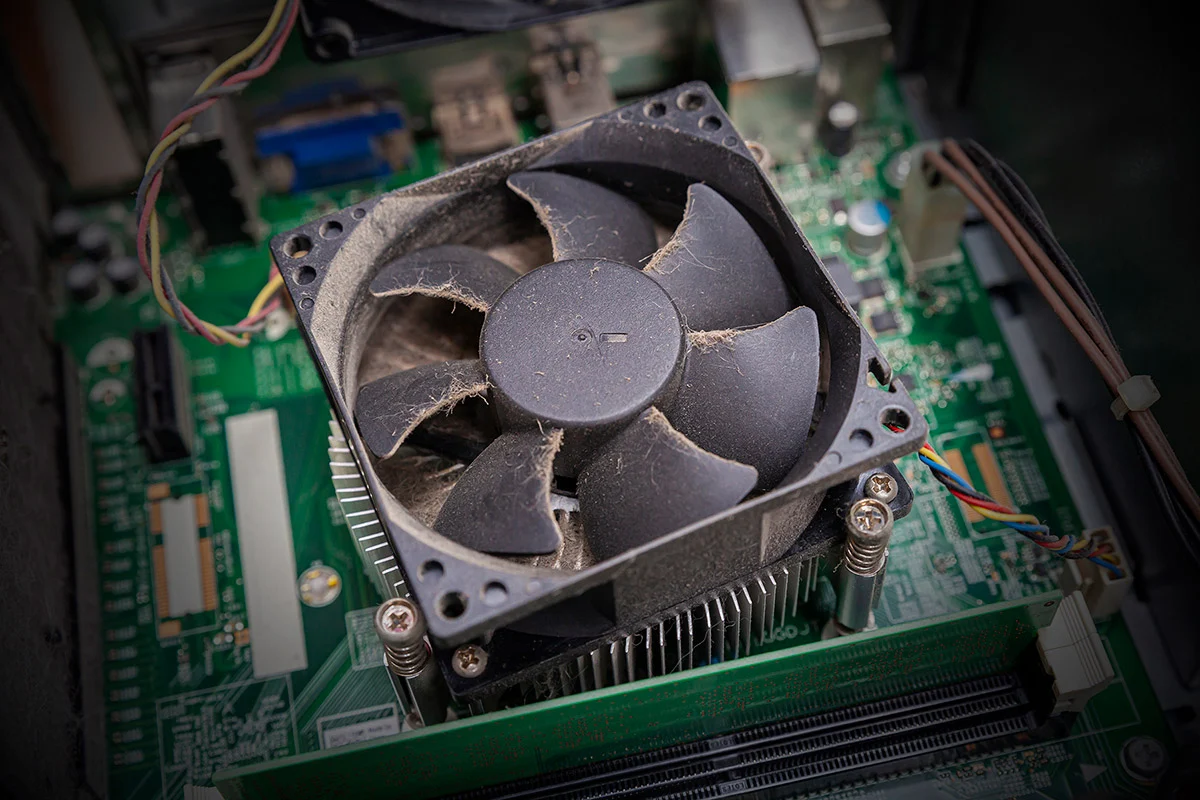Introduction
Welcome to our guide on how to lubricate PC case fans! One of the most common issues with computer fans is the development of annoying grinding noise over time. The friction between the fan bearings and its housing can cause this problem. Fortunately, the solution is relatively simple – lubricating the fan. By doing this, you can not only extend the lifespan of your PC case fans but also ensure smooth and quiet operation.
PC case fans play a crucial role in cooling your computer, preventing hardware damage due to overheating. They circulate the air within the case, removing heat generated by the processor, graphics card, and other components. Over time, the lubrication within the fan bearings can dry up or become less effective, leading to increased friction and noise. If left unattended, this can potentially result in damage to the fan and compromised cooling performance.
In this guide, we will walk you through the step-by-step process of lubricating PC case fans. We will also provide some additional tips on how to maintain your fans for optimal performance. Whether you are an experienced computer enthusiast or a beginner looking to extend the lifespan of your PC components, you’ve come to the right place.
Before we dive into the details, let’s take a look at the tools and materials you will need for this project.
Why Lubricating PC Case Fans is Important
Lubricating PC case fans is not just a matter of eliminating annoying noise; it is an essential maintenance task that can significantly impact the performance and lifespan of your computer. Here are a few reasons why lubricating your PC case fans is important:
1. Noise Reduction: A common sign that your PC case fans need lubrication is the development of a grinding or rattling noise. This noise can be incredibly distracting, especially if you use your computer for extended periods. By lubricating the fan bearings, you can reduce the friction and eliminate the noise, ensuring a quieter computing experience.
2. Cooling Efficiency: PC case fans are crucial for maintaining optimal temperatures inside your computer. When the fan bearings start to dry out or become less effective, the fan’s rotation might slow down, resulting in reduced airflow. This diminished airflow can lead to increased temperatures, potentially causing overheating issues. By lubricating the fans, you can restore their efficiency and ensure that your components stay cool.
3. Prolonged Lifespan: Properly lubricated PC case fans can have a longer lifespan compared to fans that are neglected. By reducing the friction and wear on the fan bearings, lubrication helps prevent premature damage and failure. Regular maintenance, including lubrication, can help extend the life of your PC case fans and save you the trouble and expense of replacing them prematurely.
4. Improved Performance: In addition to cooling efficiency, lubricating PC case fans can also enhance the overall performance of your computer. When the fans are running smoothly without any noise or friction, they are more capable of effectively dissipating heat. This, in turn, ensures that your computer components can operate optimally without any thermal throttling or performance degradation.
5. Cost Savings: Overheating due to poorly functioning fans can cause hardware damage and may require costly repairs or component replacements. By taking the time to lubricate your PC case fans, you can potentially avoid these expenses and keep your computer running smoothly for longer.
Now that you understand the importance of lubricating your PC case fans, let’s move on to the next section, where we discuss the tools and materials you’ll need.
Tools and Materials Needed
Before you start the process of lubricating your PC case fans, you will need a few tools and materials. Here’s a list of what you’ll need:
1. Lubricant: The most important item you’ll need is a suitable lubricant. It’s crucial to use the correct type of lubricant that is specifically designed for fan bearings. Avoid using general-purpose lubricants or oils, as they may not be compatible with the fan components and can cause damage. Look for lubricants specifically labeled for computer fans or bearings.
2. Screwdriver: In order to access the fan, you’ll need a screwdriver to remove the screws holding the fan in place. The type of screwdriver you’ll need will depend on the type of screws used in your specific case. It’s a good idea to have a set of different-sized screwdrivers on hand to ensure you have the right one for the job.
3. Cleaning supplies: Before lubricating the fan, it’s important to clean off any dust or debris that may have accumulated on the blades or inside the fan housing. You can use compressed air, a soft brush, or lint-free cloth to clean the fan thoroughly.
4. Cotton swabs: Cotton swabs can be used to apply the lubricant to the fan bearings. They provide a precise and controlled application, allowing you to reach the small crevices where the lubricant needs to be applied.
5. Isopropyl alcohol: Isopropyl alcohol can be used to clean the fan blades and remove any stubborn dirt or grime. It evaporates quickly and leaves no residue behind, making it ideal for cleaning electronic components.
6. Anti-static wrist strap (optional): When working on your computer’s internal components, it’s a good idea to use an anti-static wrist strap to prevent any damage that could be caused by static electricity. This is especially important if you are working in a carpeted or static-prone area.
Make sure you have all the necessary tools and materials ready before proceeding with lubricating your PC case fans. In the next section, we will provide a step-by-step guide to help you through the process.
Step-by-Step Guide to Lubricating PC Case Fans
Now that you have gathered the necessary tools and materials, it’s time to start lubricating your PC case fans. Follow these step-by-step instructions to ensure a successful and effective lubrication process:
Step 1: Power Off and Unplug: Before working on any internal components of your computer, make sure to power off your computer and unplug it from the power source. This will prevent any accidents or damage during the process.
Step 2: Open the Case: Use a screwdriver to remove the screws that secure the side panel of your computer case. Gently slide off the panel to expose the internal components. Take note of the fan or fans you want to lubricate.
Step 3: Remove the Fan: Locate the screws or fasteners that hold the fan in place. Carefully remove these screws, keeping them in a safe place. Once the screws are removed, gently pull out the fan from its position.
Step 4: Clean the Fan: Use compressed air, a soft brush, or lint-free cloth to remove any dust or debris from the fan blades. It’s important to have a clean surface before applying lubricant to ensure optimal performance.
Step 5: Apply Lubricant: Dip a cotton swab into the lubricant and apply a small amount to the fan bearings. Be careful not to overdo it, as excess lubricant can attract more dust and debris. Depending on the type of fan, you may need to apply lubricant to multiple points on the bearings.
Step 6: Reassemble the Fan: Once the lubricant has been applied, carefully reinsert the fan back into its original position. Make sure to align the screw holes properly. Use the screws or fasteners to secure the fan back in place. Be careful not to overtighten the screws.
Step 7: Close the Case: Put the side panel back on the computer case and secure it with the screws. Ensure everything is properly aligned and tightened, but be cautious not to overtighten the screws, as this might damage the case.
Step 8: Power On and Test: Plug in your computer and power it on. Listen for any unusual noises coming from the fan. If everything sounds smooth and quiet, it means the lubrication process was successful.
Congratulations! You have successfully lubricated your PC case fan. Regularly check your fans and repeat the lubrication process as needed to ensure their optimal performance and longevity.
In the next section, we will discuss some precautions to take while lubricating PC case fans to avoid any damage.
Precautions to Take When Lubricating PC Case Fans
While lubricating your PC case fans is a relatively simple process, it’s important to take certain precautions to ensure your safety and avoid any damage to your computer components. Here are some precautions to keep in mind before and during the lubrication process:
1. Power off and unplug: Before you begin, always make sure to power off your computer and unplug it from the power source. This will prevent any accidental startup and protect you from electric shocks.
2. Ground yourself: To avoid static discharges that can harm your computer’s internal components, it’s a good practice to ground yourself. Use an anti-static wrist strap or regularly touch a grounded metal surface to discharge any static electricity from your body.
3. Handle with care: When removing and reinserting the fan, handle it with care. Avoid putting excessive pressure on the fan blades or bending them. Mishandling the fan can cause damage and affect its performance.
4. Use the right lubricant: Use a lubricant specifically designed for computer fans or bearings. Using the wrong type of lubricant can cause damage and may lead to malfunctioning fans. Read the manufacturer’s instructions and ensure compatibility.
5. Apply the appropriate amount of lubricant: Applying too much lubricant can do more harm than good. Excess lubricant can attract dust, dirt, and debris, which can clog the fan and affect its performance. Use a cotton swab to apply a small, controlled amount to the bearings.
6. Keep the work area clean: Ensure that your work area is clean and free from dust and debris. This will minimize the risk of any contaminants getting into the fan or other computer components during the lubrication process.
7. Avoid contact with other components: While working on the fans, be careful not to come into contact with other components inside the computer. Accidentally touching or dislodging other parts can lead to component damage or disruption of your computer’s functionality.
8. Test before reassembly: After lubricating the fan, it’s important to test it before securing the case panel. Power on the computer and listen for any unusual noises. If the fan sounds smooth and functions properly, you can proceed to reassemble the case.
By following these precautions, you can ensure a safe and successful lubrication process for your PC case fans. In the next section, we will discuss how to test the fan after lubrication.
Testing the Fan after Lubrication
Once you have lubricated your PC case fan, it’s crucial to test its functionality to ensure that the lubrication process was successful. Here’s how you can test the fan after lubrication:
1. Power on your computer: Plug in your computer and power it on. Allow it to boot up normally so that the fan receives power and starts spinning.
2. Listen for unusual noises: Pay close attention to the sound produced by the fan. If the lubrication was effective, the fan should operate quietly without any grinding, rattling, or other abnormal noises. If you notice any unusual sounds, it could indicate that the lubrication process was not successful or that additional maintenance is required.
3. Observe fan speed and airflow: While the fan is running, check if it is spinning at the expected speed and generating sufficient airflow. Proper lubrication should improve the fan’s rotation and ensure consistent airflow, aiding in efficient cooling performance. If you notice any inconsistencies or decreased airflow, it may require further troubleshooting or maintenance.
4. Monitor temperatures: Keep an eye on the temperatures of your computer components. Properly lubricated fans should help maintain optimal temperatures inside the case, preventing overheating. Use software monitoring tools or BIOS settings to check the temperatures of your CPU, GPU, and other critical components. If the temperatures remain within acceptable limits, it indicates that the fan is effectively cooling your system.
5. Repeat if necessary: If you find that the fan is still producing noise or not functioning as expected, you may need to repeat the lubrication process. It’s possible that the initial lubrication was insufficient or that there is another issue with the fan that needs attention. In such cases, double-check the lubricant used and follow the previous steps to reapply it as needed.
Regularly testing your PC case fan after lubrication ensures that it is working optimally and helps identify any issues that may require further maintenance or troubleshooting. If you experience persistent problems with fan noise or cooling, it may be worth seeking professional assistance to diagnose and resolve the issue.
In the final section, we will provide some additional tips for maintaining PC case fans for optimal performance.
Additional Tips for Maintaining PC Case Fans
In addition to lubricating your PC case fans, there are several other maintenance tips that can help prolong their lifespan and ensure optimal performance. Here are some additional tips to keep in mind:
1. Regularly clean your fans: Dust and debris can accumulate on the fan blades and hinder their performance. Regularly clean your fans using compressed air, a soft brush, or lint-free cloth. This will help maintain proper airflow and prevent overheating.
2. Keep your computer in a clean environment: Limit dust and dirt from entering your computer by keeping it in a clean environment. Place your computer away from dusty areas and consider using dust filters on the intake fans to prevent debris from entering the case.
3. Monitor fan speeds and temperatures: Use monitoring software or BIOS settings to keep track of your fan speeds and temperatures. This will help you detect any abnormalities or performance issues early on and take appropriate action.
4. Check for loose or damaged fan blades: Regularly inspect your case fans for any loose or damaged blades. Loose blades can cause imbalance and noise, while damaged blades can impact the efficiency and airflow of the fan. If you notice any issues, it may be necessary to replace the fan.
5. Avoid overclocking without proper cooling: Overclocking your computer components can increase their performance but also generates more heat. Ensure that your case fans and cooling system can handle the additional heat before attempting any overclocking. Inadequate cooling can lead to component damage in the long run.
6. Consider fan replacement if necessary: If you find that your PC case fans are no longer performing optimally or are making excessive noise even after lubrication, it may be time to consider replacing them with new ones. Investing in high-quality fans can greatly enhance cooling efficiency and noise reduction.
7. Maintain proper cable management: Proper cable management inside your computer case allows for better airflow and prevents cables from obstructing the fans. Use cable ties or Velcro straps to organize and secure the cables, ensuring they don’t interfere with the fan blades or obstruct airflow.
By following these additional tips, you can maximize the performance and lifespan of your PC case fans, maintaining optimal cooling for your computer’s components.
Now that you have a comprehensive understanding of how to maintain and lubricate your PC case fans, you can enjoy a quieter and more efficient computer. Remember to perform regular maintenance and keep an eye on their performance to ensure your computer remains cool and running smoothly.
If you have any further questions or concerns, consult with a qualified professional or seek assistance from experienced computer enthusiasts. Happy computing!
Conclusion
Maintaining and lubricating PC case fans is an essential part of ensuring optimal performance, cooling efficiency, and longevity of your computer components. By following the step-by-step guide provided in this article, you can effectively lubricate your PC case fans and eliminate the annoying grinding noise that often occurs due to friction.
Remember to gather the necessary tools and materials, such as a suitable lubricant, screwdriver, cleaning supplies, cotton swabs, and isopropyl alcohol. Take precautions to handle the fans with care, ground yourself to avoid static discharges, and apply the right amount of lubricant to the fan bearings. Test the fan after lubrication to ensure quiet operation, proper fan speed, and adequate airflow for optimal cooling.
Additionally, incorporating regular fan maintenance practices, like cleaning off dust and debris, monitoring fan speeds and temperatures, and checking for loose or damaged fan blades, will further enhance the performance and longevity of your PC case fans.
Remember, maintaining a clean and dust-free environment for your computer, avoiding overclocking without proper cooling, and practicing good cable management will also contribute to better airflow and cooling performance.
If you encounter persistent issues with your PC case fans, or if the lubrication process does not resolve the problem, it may be necessary to seek professional assistance or consider replacing the fans with high-quality alternatives.
By implementing these tips and incorporating regular maintenance practices, you can ensure that your PC case fans operate smoothly, quietly, and efficiently, allowing your computer to perform optimally and preventing potential hardware damage due to overheating.
We hope this guide has been helpful in guiding you through the process of lubricating your PC case fans and providing additional tips for maintaining their performance. Remember to always prioritize safety and consult with experts if you have any concerns or questions regarding your computer’s maintenance.
Thank you for reading, and happy computing!







